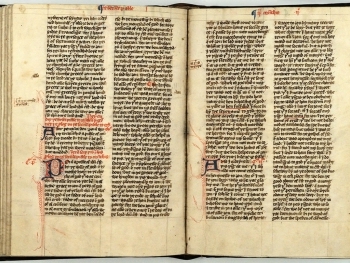
In Genesis 15, God makes a profound covenant with Abraham, promising him descendants as numerous as the stars. Within this covenant, God reveals a future of both trial and triumph:
"Know for certain that your descendants will be strangers in a land that is not theirs, and will serve them, and they will be afflicted for four hundred years. But I will bring judgment on the nation that they serve, and afterward, they shall come out with great possessions." (Genesis 15:13-14, ESV)
This prophecy has sparked centuries of reflection, interpretation, and debate. For some, it is seen as foretelling the Israelites' enslavement in Egypt. For others, it has a broader, more modern resonance, connecting to the transatlantic slave trade and the experiences of African-descended peoples. In this article, we will explore this interpretation, tracing its historical, biblical, and cultural significance.
The Context of Genesis 15
Genesis 15 is a pivotal chapter in the Bible where God establishes His covenant with Abraham. God reassures Abraham, promising land, descendants, and divine protection. However, He also warns of a period of hardship for Abraham's descendants, stating they will be strangers, enslaved, and afflicted for 400 years before being delivered with great blessings.
Traditionally, this prophecy is linked to the Israelites' sojourn and enslavement in Egypt, culminating in their liberation during the Exodus. But many have questioned whether this event fully encapsulates the 400-year timeline or if it points to additional historical narratives.
A Modern Interpretation: The Transatlantic Slave Trade
For some communities, particularly among African-descended populations, Genesis 15:13-14 resonates deeply as a prophetic lens through which to view their own history. This interpretation connects the prophecy to the transatlantic slave trade, beginning in 1619 when enslaved Africans were first brought to America, and culminating in a spiritual reckoning in 2019, marking 400 years.
- 1619 and the Beginning of Enslavement
- The year 1619 is a critical marker in American history, signifying the arrival of the first enslaved Africans in Jamestown, Virginia. This event marked the start of centuries of enslavement, oppression, and systemic discrimination for millions of African descendants.
- A People Without a Land
- The prophecy speaks of Abraham's descendants being "strangers in a land that is not theirs." This aligns with the experience of African ancestors forcibly removed from their homelands, stripped of their cultural identity, and enslaved in foreign lands.
- Affliction and Struggle
- The 400-year timeline corresponds with the systemic affliction faced by African descendants, from slavery to Jim Crow, to ongoing racial inequality and oppression in modern times.
- Deliverance and Restoration
- The prophecy's latter part speaks of judgment upon the oppressing nation and eventual restoration. Many interpret this as a spiritual awakening and the reclaiming of identity, dignity, and purpose by African-descended peoples in the modern era.
Who Are the Descendants of Shem?
A key part of this interpretation involves ancestry. The commenter asserts that their ancestors are not Hamites but Shemites (or Semites), tracing their lineage back to Shem, one of Noah’s three sons. This view rejects the longstanding association of African peoples with Ham, often based on the so-called "Curse of Ham" narrative, which has been misused historically to justify enslavement and racism.
- Historical Migration
- According to this perspective, African-descended peoples are descendants of Shem who fled Israel during periods of conflict and exile. Many believe they crossed the Sahara Desert and settled in the Niger region of West Africa, where their communities later became targets of the transatlantic slave trade.
- Biblical Evidence
- Proponents point to linguistic, cultural, and historical ties between African traditions and ancient Israelite customs as evidence of Shemitic heritage.
- Rejecting the Curse of Ham
- The "Curse of Ham" narrative, derived from Genesis 9, has been widely discredited as a misinterpretation of Scripture. It incorrectly labels all African peoples as descendants of Ham, a claim used to justify the subjugation of African populations during the colonial era. This modern interpretation seeks to reclaim a rightful identity as Shemites.
Historical Connections Between West Africa and Israel
The idea of African communities tracing their lineage to ancient Israel is not new. Historical records and oral traditions suggest possible connections:
- Jewish Communities in Africa
- Jewish communities have existed in Africa for centuries, such as the Beta Israel in Ethiopia and the Lemba people in Southern Africa, who claim descent from ancient Israelites.
- Migration Patterns
- During times of exile and dispersion, many Israelites are believed to have migrated southward, eventually reaching Sub-Saharan Africa.
- Cultural Parallels
- Scholars and researchers have noted similarities between certain African cultural practices and biblical traditions, such as circumcision, dietary laws, and Sabbath observance.
Spiritual and Cultural Awakening
The 400-year interpretation is not just about understanding the past but also about reclaiming identity and purpose for the future. Many see this as a time of spiritual awakening, where African-descended peoples reconnect with their biblical heritage and divine calling.
- Rediscovery of Identity
- Movements like Hebrew Israelite communities emphasize the importance of knowing one's lineage and embracing a Shemitic identity.
- Cultural Reclamation
- The reinterpretation of history allows communities to challenge oppressive narratives and celebrate their resilience and contributions to global civilization.
- Faith in Deliverance
- Just as God delivered the Israelites from Egypt, many hold to the hope that God continues to work for justice, restoration, and deliverance today.
Genesis 15:13-14 is a profound prophecy that has resonated with generations of believers. While its traditional interpretation points to the Israelites' enslavement in Egypt, its themes of displacement, affliction, and divine deliverance have universal relevance.
For many African-descended peoples, this prophecy holds particular significance, shedding light on their historical journey from oppression to restoration. Whether viewed as a historical parallel or a spiritual fulfillment, this interpretation highlights the enduring power of God’s promises and the unshakable hope for a brighter future.
Let’s continue to explore the rich and transformative stories found in the Bible together.
Genesis 15 prophecy Genesis 15 400 years in the Bible African history and the Bible Shemitic ancestry Transatlantic slave trade Biblical identity Israelites in Africa Curse of Ham debunked Shem descendants African-American biblical heritage African-American







